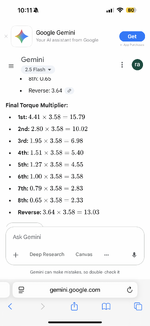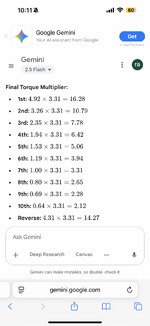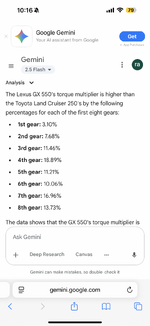Numbers are accurate. There are several independent dyno tests for this engine on various platforms.
Non-hybrid version of this platform makes 267 horsepower in Tacoma. If you add the 50HP electric motor, it will easily make 297 peak HP. In fact, it makes higher power at the wheels compared to 5.7 V8 in LC200 due to exceptionally low drivetrain losses.

 www.tacomaworld.com
www.tacomaworld.com

 forum.ih8mud.com
forum.ih8mud.com
It doesn’t match GX in 0-60 because it is heavier and electric motor doesn’t stay engaged for the entire 0-60 run. It is also the same reason why LC has faster 30-50 and 50-70 times compared to GX. If Toyota wanted, they could have made LC faster by programming some type of launch control that keeps the electric motor at full power, but that is not something LC is about, so why bother.
Non-hybrid version of this platform makes 267 horsepower in Tacoma. If you add the 50HP electric motor, it will easily make 297 peak HP. In fact, it makes higher power at the wheels compared to 5.7 V8 in LC200 due to exceptionally low drivetrain losses.
2024 Toyota Tacoma on the Dyno VS 3rd gen Tacoma on the Dyno
Pretty impressive numbers coming out of the 2024 Toyota Tacoma! This is the non-hybrid turbo four cylinder i-Force engine. This new engine is putting...
Regarding 5.7 torque curve
I don’t understand this power curve. Does anyone know the sweet spot for the 5.7 v8 torque curve? Like what’s the rpm to shoot for for being in final gear (.59 in the 6 speed I think) on the highway?
 forum.ih8mud.com
forum.ih8mud.com
It doesn’t match GX in 0-60 because it is heavier and electric motor doesn’t stay engaged for the entire 0-60 run. It is also the same reason why LC has faster 30-50 and 50-70 times compared to GX. If Toyota wanted, they could have made LC faster by programming some type of launch control that keeps the electric motor at full power, but that is not something LC is about, so why bother.
Last edited:






